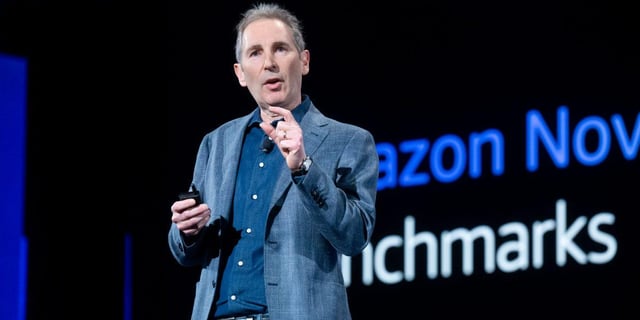Amazon’s Layoffs: Not About Costs, Not About AI, But About Culture?
It’s a headline that grabs attention: Amazon, a tech behemoth, laid off 14,000 employees. The immediate assumptions? Cost-cutting measures in a shaky economy, or the relentless march of AI rendering jobs obsolete. But Amazon CEO Andy Jassy throws a curveball. He claims the layoffs weren’t primarily about either. Instead, Jassy points to a critical, yet often overlooked, factor: company culture. This raises a critical question: can culture really be the driving force behind such a massive workforce reduction?
Delving into Jassy’s Explanation
According to Jassy, the layoffs stemmed from a desire to reshape Amazon’s organizational structure and decision-making processes. The goal, he implies, is to foster a more agile, innovative, and customer-centric culture. This suggests that certain departments or teams may have been deemed misaligned with this vision, or perhaps were deemed to be contributing to inefficiencies. Essentially, the move indicates a shift from a potentially bloated or stagnant structure to one that can better respond to market changes and technological advancements.
This isn’t just about trimming the fat. Jassy’s focus on culture suggests a more profound evaluation of how Amazon operates. It’s about ensuring that the right people are in the right roles, working in an environment that encourages innovation and efficiency. The layoffs, in this context, become a strategic maneuver designed to realign the workforce with the company’s long-term cultural aspirations. This bold statement certainly invites further scrutiny into Amazon’s existing and desired culture.
The Culture Connection: What Does it Really Mean?
But what does it mean for layoffs to be “about culture”? It’s a complex concept, especially within a company as large and multifaceted as Amazon. We can infer that Jassy is targeting elements like inefficient processes, lack of collaboration, or a resistance to change. A cultural reset often involves re-evaluating existing hierarchies, communication channels, and decision-making processes.
Imagine a scenario where certain departments are siloed, hindering information flow and collaboration. Or picture teams clinging to outdated methodologies, slowing down innovation. Such cultural bottlenecks can significantly impact a company’s overall performance. Layoffs, in this context, could be seen as a drastic measure to remove these roadblocks and pave the way for a more adaptable and forward-thinking environment. This can also be an opportunity to promote a culture of ownership, where employees feel empowered to contribute ideas and take initiative.
Beyond Cost-Cutting and AI: Long-Term Strategy
While cost-cutting and the rise of AI are undoubtedly significant factors in the tech industry, framing the layoffs primarily as a cultural shift paints a broader picture. It suggests a long-term strategic vision aimed at future-proofing Amazon’s business. By focusing on culture, Jassy is signaling a commitment to building a resilient and adaptable organization that can weather future challenges and capitalize on new opportunities.
This approach also allows Amazon to potentially attract and retain top talent who are drawn to a dynamic and innovative work environment. In a competitive market, a strong and positive company culture can be a significant differentiator. However, this also places immense pressure on Amazon’s leadership to demonstrate that the layoffs are indeed contributing to a better work environment. The actions taken to rebuild and reshape the culture in the aftermath of these layoffs will be crucial in determining whether Jassy’s claims hold water.
The Risks and the Road Ahead
The focus on culture isn’t without its risks. Large-scale layoffs can create uncertainty and anxiety among remaining employees, potentially damaging morale and productivity. It’s vital for Amazon to clearly communicate its vision and provide support to those affected by the changes. Transparent communication about the company’s goals and the rationale behind the layoffs is essential for rebuilding trust and fostering a sense of shared purpose.
Furthermore, successfully reshaping a company’s culture requires more than just layoffs. It involves investing in training, development, and leadership programs to cultivate the desired behaviors and values. Amazon needs to ensure that its policies and practices align with its cultural aspirations. The road ahead will be challenging, requiring careful planning, execution, and ongoing evaluation. Only time will tell if Jassy’s bet on culture will pay off and solidify Amazon’s position as a leading innovator.
